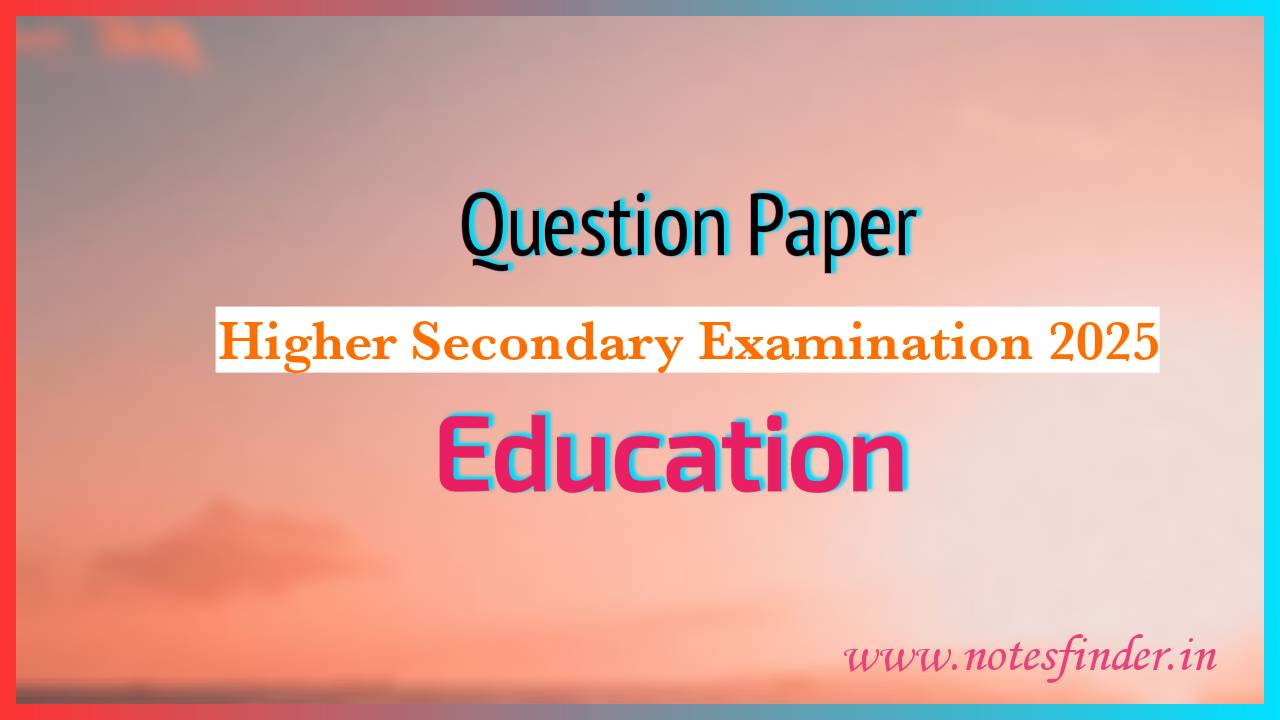PART- A [Marks: 60]
1. Answer any two of the following questions each in about 100 words: 6×2=12
(a) “I’m tired of people telling me I have a pretty face.”- Who said this, to whom and when? What did the person spoken to reply? 1+1+2+2
(b) “People of different religions would be sitting outside waiting for him.”- Who is referred to as ‘him’? Where did the people wait? Why did they wait there? What would happen thereafter? 1+1+2+2
(c) What had Mrs. Jones guessed to be the real reason behind Roger’s action? What was the real reason? What did Mrs. Jones do so that Roger could fulfil his wish? What did she tell him then? 1+1+1+3
(d) What were the three questions the Tsar wanted to be answered? Why did he need the answers? Why was he dissatisfied with the answers given by the scholars and learned men? 3+1+2
2. Answer any two of the following questions each in about 100 words: 6×2=12
(a) “And then it is done.”- What a being referred to? How is it done? On what tone does the poem end? 1+3+2
(b) “The humming insects don’t disturb his rest.”Who rests and where? Why is his rest not disturbed by the insects? 1+1+4
(c) What do the rough winds do? What does the poet mean by summer’s lease? How is the friend’s beauty superior to the summer’s day? 1+2+3
(d) Identify the voices of The Poetry of Earth’. How does Keats establish its continuity through these voices? 2+4
3. Answer any one of the following in about 100 words: 6×1=6
(a) “And it’s impossible for me not to marry.”-Why is the speaker so interested to marry? Whom does he want to marry? Why? 3+1+2
(b) “I’ve been hoping for it for a long time.”-Who is the speaker? What does ‘it refer to? How did the speaker come to know about ‘it ? What more did the speaker say in this context? 1+1+1+3
(c) “Bring him back! Back! Ah! Bring him here.”- Who says this and to whom? When is this said? What impression of the speaker can be formed from this remark? 1+1+2+2
Or
(a) “I’m telling you to give this poor man some food.”- Who said this and to whom? Who was the ‘poor man’? Why did he need food? How did the speaker warn the person spoken to? 1+1+1+1+2
(b) How did Charandas plan to rob the wealthy merchant’s wife? 6
(c) “Get out of my sight! Don’t let me set eyes on you again. Liar!” – Who is the speaker? Who is the person spoken to? Why did the speaker say this? 1+1+4
4. (a) Do as directed: 1?6=6
(i) The hermit was digging the ground. [Change the voice]
(ii) Lomov: I’ll show you the documents, Natalya Stepanovna! [Change into indirect speech]
(iii) There was a very old mosque in our locality where my father would take me for evening prayers. [Split into two simple sentences]
(iv) The poetry of earth is never dead. [Turn into an affirmative sentence]
(v) He answered in a low deep voice. [Use the underlined word as a noun and rewrite the sentence]
(vi) The sun’s rays were bright. They lit up the valley. [Combine and turn into a simple sentence]
(b) Fill in the blanks with appropriate articles and/or prepositions: 3
I moved easily .. (i) .. the berth and felt .. (ii) .. the window ledge. The window was open and I faced it, making a pretence .. (iii) … studying the landscape. I heard the panting .. (iv) .. the engine, the rumble of the wheels, and, .. (v) .. my mind’s eye, I could see telegraph posts flashing .. (vi) …
(c) Correct the error in the following sentence by replacing the underlined word with the right one from the options given below: 1×1=1
I would say my was a very secure childhood. [Options: (i) I (i) me (iii) mine]
5. Read the following passage and answer the questions that follow:
In 1955, with the release of his first feature film, Pather Panchali’, Satyajit Ray became an internationally acclaimed filmmaker. His reputation further surged with the completion of the Apu Trilogy (1959), considered by some critics to be the greatest cinematic set ever made. By the time of his death in 1992, Ray had made twenty-nine features and seven documentaries and shorts. Working with simple tools, he fashioned tales, both visual and literary, that were straightforward in their presentation yet richly complex in their capacity to suggest multiple meanings and interpretations. He wrote his own screenplays, handled the camera, and did his own editing work as well. After 1962, he began scoring music for all his films. Trained as a graphic artist, he sketched out each scene before shooting and designed the posters that publicized his new releases.
Satyajit Ray was born on 2 May 1921 in Kolkata to Sukumar and Suprabha Ray. He was born into a distinguished family of artists, writers, musicians, scientists, and physicians. His grandfather, Upendra Kishore, was an innovator; a writer of children’s storybooks (popular to this day), an illustrator, printer, and musician. Ray’s father, Sukumar, trained as a printing technologist in England, was Bengal’s most beloved nonsense rhyme writer, illustrator, and cartoonist. He died when Satyajit was only two and a half years old.
(a) State whether the following statements are True or False. Write T for True and ‘F’ for False: (You need not write the sentences, write only the numbers)
(i) Pather Panchali’ was Satyajit Ray’s first feature film.
(ii) Ray always scored music for his films.
(iii) Ray’s films had multiple meanings and interpretations.
(iv) Ray’s grandfather was only a writer of children’s storybooks.
(b) Answer each of the following questions in about 30 words: 2×3=6
(i) Why did Ray’s reputation surge after 1959?
(ii) Why was Satyajit Ray’s father famous?
(iii) Mention any three activities Ray undertook for his films, apart from directing them.
(a) Write a report on the seminar Plant Tree, Save Life and Water’ organised by your school. The report will be published in your school magazine. Mention the roles of the students and teachers, purpose of the seminar, participation and response, and so on. (Word limit: 150 words) 2+8=10
Or, (b) You have lost your bank passbook. Write a letter to the manager of the bank requesting him to issue a duplicate passbook. (Word limit: 150 words) 2+8=10
Or, (c) Write a precis of the following passage. Add a suitable title. 2+8=10
No one can deny the importance of history in our civilization. No study of present is complete without a reference to the past. If we go to history for a mere catalogue of facts and a record of annals and dates, we will be mistaken. We will only know the surface reality. The proper study of history lies in the relation of the past with the present; how the present relates to the past, and what happened in the past has a profound connection with the present. It is from history that we come to learn how misfortunes could have been avoided or how people could take lessons from good things. Such knowledge would surely help in the progress of civilization. The real understanding of history lies in this. [129 words]
PART-B [Marks: 20]
[Multiple Choice Type Questions (MCQ) and Short Answer Type Questions (SAO) of 1 mark.]
1. Complete each of the following sentences, choosing the correct option from the alternatives provided: 1×4= 4
(i) Mrs. Jones wanted to teach Roger …
(a) right from wrong
(b) what was right
(c) what was wrong
(d) what he should be
(ii) What tantalized the narrator was the …
(a) ringing laugh of the girl
(b) sweet talk of the girl
(c) melodious voice of the girl
(d) perfume of the girl’s hair
(iii) The most necessary man is he …
(a) with whom you work
(d) with whom you are
(c) with whom you live
(d) who helps you in trouble
(iv) The words of Abdul Kalam’s father filled him with a strange energy and …
(a) relief
(b) enthusiasm
(c) perseverance
(d) determination
2. Answer any four of the following questions, each in a complete sentences: 1×4= 4
(i) What did the narrator ask the new fellow-traveler about the girl?
(ii) Who was a very close friend of Abdul Kalam’s father?
(iii) What lesson of his life did Roger learn at the end of the story from Mrs. Jones?
(iv) What did the wounded man promise the Tsar?
(v) Why did the narrator think that his voice must have startled the girl?
(vi) How was Abdul Kalam’s mother’s lineage different from his father’s?
(vii) Why did Mrs. Jones call the boy a liar?
(viii) What was the second question of the Tsar?
3. Complete each of the following sentences, choosing the correct option from the alternatives provided: 1×4= 4
(i) “But thy eternal summer shall not fade”- here ‘thy’ refers to-
(a) Shakespeare
(b) the sun
(c) Shakespeare’s friend
(d) the season of summer
(ii) The poet seems to suggest that in order to kill a tree-
(a) plucking out all the leaves will do the job
(b) some pain will do the job
(c) cutting the branches will do the job
(d) total destruction of the roots will do the job
(iii) Being tired the grasshopper rests beneath
(a) a tree
(b) a bush
(c) some pleasant weed
(d) grassy hills
(iv) The words ‘red holes’ mean
(a) spots of blood clots
(b) red flowers in the valley
(c) bullet wounds
(d) none of these
4. Answer any four of the following questions, each in a complete sentence:1×4= 4
(i) In what form of verse is the poem ‘On Killing a Tree’ written?
(ii) Where are the feet of the soldier placed?
(iii) What does the line ‘And every fair from fair sometimes decline’ mean?
(iv) Whose voice shall run from hedge to hedge?
(v) What is meant by leprous hide’?
(vi) What is the soldier’s smile compared to?
(vii) In which month can the ‘darling buds’ be seen?
(viii) What does Keats celebrate the poem The Poetry of Earth’?
5. Complete each of the following sentences, choosing the correct option from the alternatives provided: 1X4= 4
(i) Lomov hoped to go for shooting
(a) before the harvest
(b) in November
(c) in June
(d) after the harvest
(ii) When Lomov arrived, Natalya was
(a) instructing her mowers
(b) shelling peas for drying
(c) stacking hay
(d) reading a book
(iii) When Natalya comes to know that Lomov had come to propose her, she asks her father to
(a) never allow him again
(b) take him to court
(c) get him by the neck
(d) bring him back
(iv) The first argument between Lomov and Natalya
was over
(a) Land
(b) Labour
(c) Hunting dogs
(d) Inheritance
Or,
(i) What surprised the queen about Charandas’s character was the combination of
(a) kindness and thieving
(b) bravery and cheating
(c) thieving and honesty
(d) thieving and pride
(ii) The chorus in ‘Charandas Chor’ sings that there are so many rogues who
(a) look respectable
(b) look like thieves
(c) look like honest thieves
(d) steal at night
(ii) If Charandas confessed to stealing the golden platter, the Havaldar suggested that
(a) he might arrest Charandas
(b) they would share the booty
(c) he could take it from Charandas
(d) he would tell the landlord,
(iv) The name of the queen was
(a) Chandravati
(b) Kalavati
(c) Kamalavati
(d) Dharmavati



